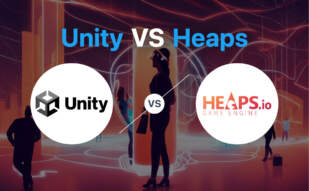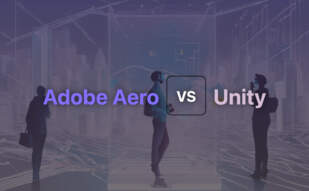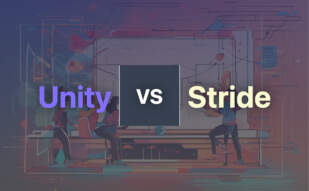For solo or small-scale indie developers conscious of sudden cost shifts, jMonkeyEngine‘s free, open-source model provides stability and access to a vibrant developer community. However, for developers seeking advanced AR/VR capabilities, Unity trumps with its wide-ranging tools and resources.

Key Differences Between Unity and jMonkeyEngine
- Unity provides superior AR/VR support, whereas jMonkeyEngine caters to traditional 3D game development.
- jMonkeyEngine operates a free, open-source model guaranteeing financial stability, Unity channels a per-install fee system.
- Unity maintains a rich asset store for pre-designed game elements, jMonkeyEngine uses libraries like ‘jmonkey store’.
- jMonkeyEngine is lauded for beginner-friendly design while Unity requires a steeper learning curve yet yields more sophisticated possibilities.
| Comparison | Unity | jMonkeyEngine |
|---|---|---|
| Platform | 3D and 2D game development engine | Java-based 3D game engine |
| Cross-platform Compatibility | Yes (Including Android and iOS) | Yes (Including PC, Linux, iOS, Android, and Mac) |
| Pricing Structure | Per-install fees, with a free and Pro version available | Free, open-source, permissive BSD 3-Clause license |
| Community Support | Active developer community | Active developer community and comprehensive documentation |
| Scripting Languages | BOO script, Javascript, C# | Java |
| Asset Store | Yes | Libraries available on Maven Central repository, uses groupID “org.jmonkeyengine” |
| Game Development Strength | High-quality games, AR/VR features encouraged | High-quality games with stunning post-process water and light scattering, bullet physics, normal and specular maps |
| User Experience | Unannounced pricing changes resulting in diminished trust | Beginner-friendly, dominant presence in game-education programs |
What Is Unity and Who’s It For?
Unity is a powerful game development engine oriented towards creating immersive 3D and 2D games. Incepted in 2005, the platform has emphasized cross-platform compatibility, facilitating launches on various OS including Android and iOS. The main attraction lies in its versatility, with a broad scope comprising augmented reality, 3D simulations, and more.
Unity primarily targets game developers with a comprehensive toolkit harboring high-end rendering technology. However, recent pricing redesigns have drawn criticism, particularly from solo, indie, and mobile developers, thus signaling a potential shift in user demographics.
Pros of Unity
- Provides a suite of tools for high-quality game creation.
- Compatible with several operating systems.
- Offers an integrated asset store rich in pre-designed textures.
- Active developer community.
- Supports multiple coding languages.
Cons of Unity
- New pricing model sparking backlash from developers.
- Retroactive fees fostering mistrust among users.
- Potential financial hindrances for indie developers.
- No fraud detection practices to prevent charging developers for pirated copies.
- Discontinued Unity Plus subscription tier.
What Is jMonkeyEngine and Who’s It For?
jMonkeyEngine, a Java-based game engine, provides a minimalist yet powerful platform for game developers. Catering to Android compatibilities, the engine employs a code-first approach, emphasizing user-friendliness and simplicity.
Targeting developers from beginners to advanced, its strong suit lies in offering comprehensive documentation, community support, and a variety of educational modules making it a considerable choice for game-education programs.
Pros of jMonkeyEngine
- Provides variety of GUI options.
- Open-source, free with permissive BSD 3-Clause license.
- Comprehensive documentation and community support.
- Cross-platform compatibility.
- Advanced post-processing and terrain libraries.
Cons of jMonkeyEngine
- Lower-level game development tool may limit capabilities.
- Limited in-game asset resources compared to bigger engines.
- Conservative, code-first approach may not suit all developers.
- Relatively less active developer community than rivals.
Code Examples for Unity & jMonkeyEngine
Unity
In this Unity function, we demonstrate how to randomly rotate a Cube on its own axis. This script is written in C#, and to utilize it, you need a Unity3D environment. Attach the script to a cube Game Object.
using System.Collections;
using UnityEngine;
public class SpinObject : MonoBehaviour{
public float spinSpeed = 100f;
IEnumerator Start(){
while(true){
yield return new WaitForEndOfFrame();
transform.Rotate(new Vector3(Random.value, Random.value, Random.value) * (spinSpeed * Time.deltaTime));
}
}
}jMonkeyEngine
In this jMonkeyEngine code snippet, we demonstrate the creation of a pulsating light source. You will need the jMonkeyEngine SDK, jME3-jbullet library and Lightweight Java Game Library (LWJGL). Attach this script to a Light Object.
import com.jme3.app.SimpleApplication;
import com.jme3.light.PointLight;
import com.jme3.math.ColorRGBA;
import com.jme3.math.Vector3f;
public class Main extends SimpleApplication{
private PointLight pl;
public static void main(String[] args){
Main app = new Main();
app.start();
}
@Override
public void simpleInitApp(){
pl = new PointLight();
pl.setColor(ColorRGBA.White);
pl.setPosition(cam.getLocation());
rootNode.addLight(pl);
}
@Override
public void simpleUpdate(float tpf){
pl.setPosition(
cam.getLocation().add(
new Vector3f(
(float)Math.sin(tpf*2)*2,
(float)Math.sin(tpf*2)*2,
(float)Math.sin(tpf*2)*2
)
)
);
}
}Unity vs jMonkeyEngine: The Final Verdict
Both Unity and jMonkeyEngine have their uniquely robust applications. Which engine breaks the finish line first? Let’s ascertain.
Indie Game Developers
In the face of Unity’s forthcoming pricing policy, jMonkeyEngine emerges as a viable win. Simplistic, minimalistic, and perpetually free, it addresses indie developers budget constraints.Flexibility in language selection is an extra merit.

AR/VR Developers
For AR/VR developers the scales tilt towards Unity. Its continual evolution tailors to the intricacies of AR/VR game development.The wealth of features on offer coupled with the rich asset store favors more advanced immersion capability.

Mobile Game Developers
Unity shows dominance again for mobile game developers. Its cross-platform prowess, refined texture creation capabilities, and heightened visual experience appeals vastly to those ambitious to launch impactful Android, iOS games.

Game Dev Educators
jMonkeyEngine leaps ahead for educators keen on imparting game development concepts. Its easier learning curve and credible community support make it a go-to. Plus, the abundance of online resources and tutorials, make the teaching job easier.

Between Unity and jMonkeyEngine, the edge is situational. Unity demands preference for AR/VR and mobile game development, thanks to its superior toolset. However, jMonkeyEngine is a prudent pick for indie developers and educators, considering its free and learner-friendly nature.
Logan Bellbrook
Content writer @ Aircada with a knack for nature & AR/VR/XR. Blogging the intersection of tech & terrain.





